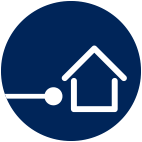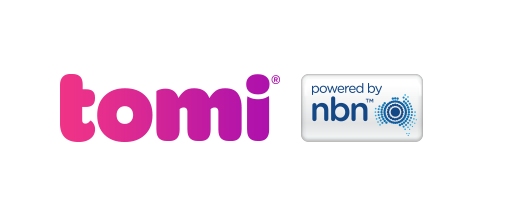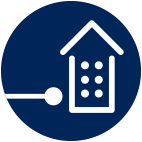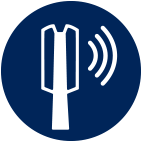Speed Information for nbn™
Here at Tomi we’re proud of our network and do our best to provide you with the fastest internet speeds and best experience possible. The internet is a complex thing and this article explains the many factors affecting the internet speed that is achievable to your premises. These includes the following:
- The technology connected at your address
- The quality connection in your area and premises.
- The premises wiring and equipment use.
- Network Congestion
The Factors affecting the internet speeds are described in detailed below.

Speed and Performance by nbn™.
The Connection technology and selected speed tier.
Depending to your address, different technologies can be used to be connected in your premises to Tomi’s nbn™ Network with each different type of connection type has a different hypothetical maximum speed. Additionally with each Technology, multiple speed tiers may be available. Below explains the variety of the nbn™ connection types.
| Connection Technology | Description |
Fibre to the Premises (FTTP)
|
An nbn™ Fibre to the Premises (FTTP) connection is used in circumstances where a fibre optic line will be run from the nearest available fibre node, directly to your premises |
| Hybrid Fibre Coaxial (HFC)
|
An nbn™ Hybrid Fibre Coaxial (HFC) connection is used in circumstances where the existing ‘pay TV’ or cable network can be used to make the final part of the nbn™ access network connection |
| Fibre to the Node (FTTN)
|
An nbn™ Fibre to the Node (FTTN) connection is utilised in circumstances where the existing copper phone and internet network from a nearby fibre node is used to make the final part of the connection to the nbn™ access network. |
| Fibre to the Curb (FTTC)
|
An nbn™ FTTC connection is used in circumstances where fibre is extended close to your premises, connecting to a small Distribution Point Unit (DPU), generally located inside a pit on the street. From here, the existing copper network is connected to the fibre to form the final nbn™ connection |
| Fibre to the Building (FTTB)
|
An nbn™ Fibre to the Building (FTTB) connection is generally used when nbn are connecting an apartment block or similar types of buildings to the nbn™ access network. In this scenario we run a fibre optic line to the fibre node in the building’s communications room, and then we use the existing technology in the building to connect to each apartment. |
| Fixed Wireless
|
An nbn™ Fixed Wireless connection utilises data transmitted over radio signals to connect a premises to the nbn™ broadband access network. |
Internet Connection to your Area and Premises
The specific line access at your address can be affected to your internet speeds.
These include the following:
- FTTN or FTTB technology
- Length of the copper line from the premises to the node
- Quality of the copper line from the premises to the node
- Weather conditions
- Quality and layout of in-premises cabling
- Internal and external electrical interference
- HFC Technology
- Quality of co-axial cable
- Quality and layout of in-premises cabling
- Internal and external electrical interference
- Fixed Wireless Technology
- Signal strength or obstruction of the antenna’s line of sight to the tower
- Weather conditions, like extreme heat and heavy rain
FTTN/B/C Speeds
The capable maximum speed that your access line can be purposive is once your FTTN/B/C service has been tested and installed. If the access line speed is limited for some reason, it’s not convenient in selecting a higher network speed tier.
Once your nbn™ service is activated, NBN Co. will run an access line speed. If NBN Co. suggest you that your access line is not efficient of supporting the speed tier you have chosen, we will give you an option to down grade your plan to a lower speed tier and will provide a credit adjustment in any difference in speed tier charges that was paid. You should let us know if you wish to downgrade your plan speed tier within 2 months of your nbn™ service activation.
Network Management and Congestion
We love our network and are always looking at ways to improve your experience during peak hours. During peak hours, internet broadband speed will slow down as more customers are using our network at the same time. Generally, during these hours the network speed frequently determine the internet speed you experience rather than your access line speed or the speed tier you selected.
Internet speeds can be affected by the source of the content and congestion at the servers by providing the content. For example, if you’re downloading from a server which is affected by congestion or has a small capacity, it will affect the speed and it will slow down even if you gave the fast home connection. If the servers are located in another side of the planet, speeds may be affected by congestion on international data links.
Wiring, Equipment and Usage in your premises
In your premise there are some items you work with to improve your internet experience and speed. Some common ones are:
- Internal wiring and configuration: Damaged, corroded, badly connected or poorly configured copper lines within your premises can significantly reduce your Tomi nbn™ speed.
- Equipment: The quality and age of your modem, routers and devices can all affect internet speeds, particularly at higher internet speeds;
- Wi-Fi interference: The location of your modem and any radio or electrical interference with other devices in or near your home will influence your connection.
- Usage: The number of users and devices online at once.
- Malware, viruses.
Typical Evening Speeds
Your experience of the actual speed depends on many factors such as access technology, the total network demand, local internet traffic, your physical line condition, the hardware and software you use, the location of data source and the performance of WiFi within your building.
To get a better understanding about download speeds, imagine that the Tomi’s nbn™ Network as a freeway. Your chosen internet speed tier has a set maximum allowable speed limit on how fast your data is to travel on the freeway. During evening periods, data may be able to travel across the network with the relevant speed tier’s ‘speed limit’. However, during peak periods, like any freeway speed of network data frequently slows with the congestion and the speed which your data can travel will often be lesser that the ‘speed tier’ speed limit of your access line
The current typical evening speeds on the Tomi’s nbn™ network are
| Unlimited nbn™ Lite | Unlimited nbn™ Fast | Unlimited nbn™ Super Fast | Unlimited nbn™ Hyper | |
| Typical Evening Speed (7pm – 10pm) | 9.2 Mbps Download | 20 Mbps Download | 43.6 Mbps Download | 80 Mbps Download |
| Ideal for | Browsing and Emails
|
Streaming Music
and Video and web browsing |
Multiple devices
streaming HD video and music streams with few users
|
Multiple devices
streaming HD/UHD video and music streams with many users
|





